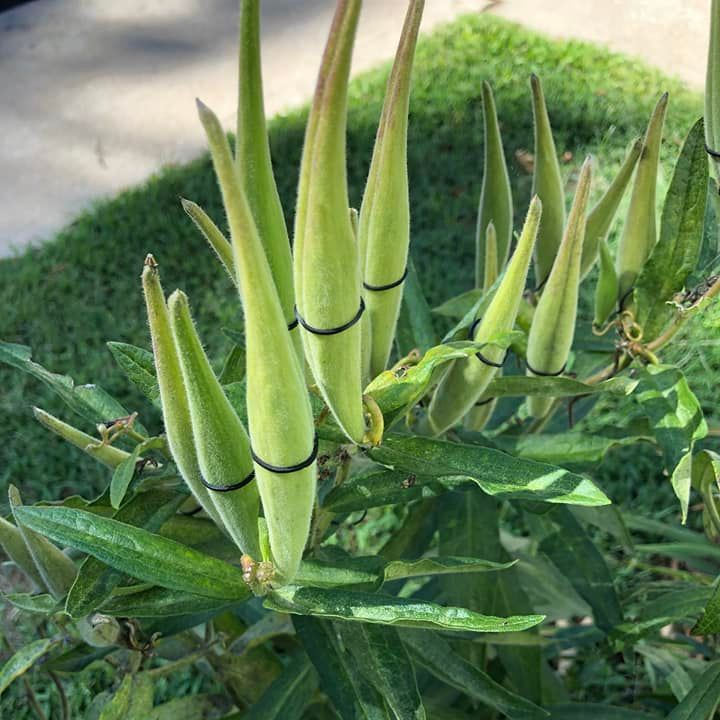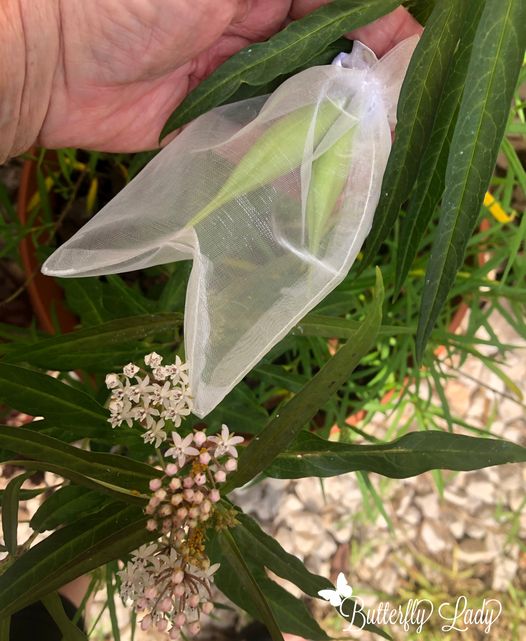Timing is everything when harvesting milkweed seeds! Too soon and the seeds will be immature and won’t germinate, too late and they will have either blown away or create a flossy mess you’ll need to deal with.
When the seeds are ready to disperse, the floss will expand, causing the pod to burst. For those wishing to collect seed, this floss can be problematic, creating a messy barrier to gathering large amounts of viable seed. There are several options for separating the floss, but the best option is to plan your timing so that you are able to easily remove the seed as soon as it is mature, but before the silky floss has expanded.

Milkweed seeds should be brown and leathery when mature, though the pods themselves may still be green. You can test an unopened pod for maturity by applying gentle pressure to the seam. If the center seam of the pod pops with gentle pressure, the seed pod is ready to be picked. If it does not open readily, the seeds inside are immature.

Be aware of the milkweed beetle around open seed pods. These beetles are orange and black and will damage the seeds, making them nonviable. While the bugs do no harm to the plant, if a pod is covered in these insects it’s likely the seed inside is no longer viable and those pods should be avoided.

The beetle is not able to chew its way into the pods but will wait for the pod to open. A rubber band lightly wrapped around the pod will prevent the milkweed beetle entry to the seedpod. Cheesecloth or organza can also be used to surround the seedpods until they are mature.



Once you have collected the milkweed seeds you can store them in a paper bag or envelope until you are ready to plant them. Most native milkweed seeds require cold stratification in order to germinate. Seeds can be planted in the fall on a prepared bed, winter sowed in containers, or planted in the spring after the seeds have been cold stratified in the refrigerator. Click here for more details: http://butterfly-lady.com/three-ways-to-sow-native-milkweed-seeds/

